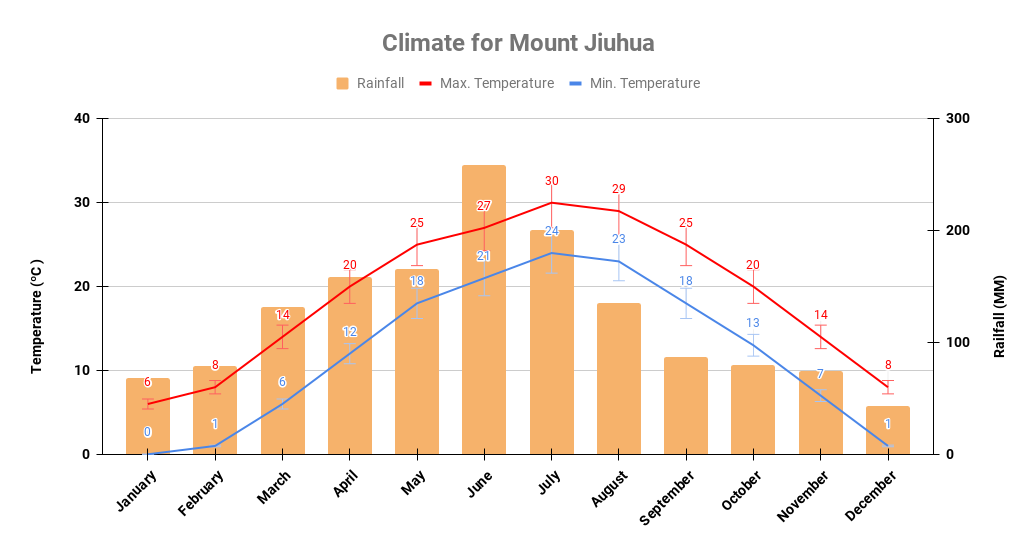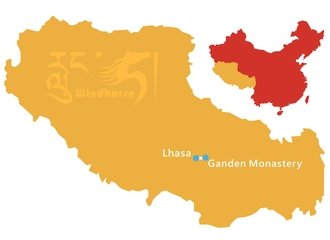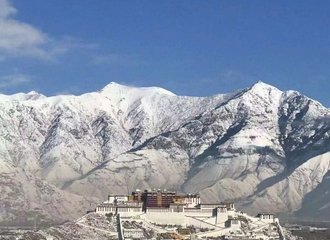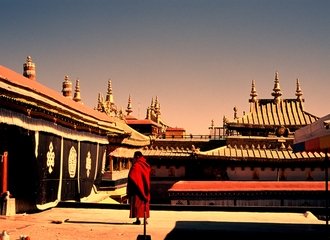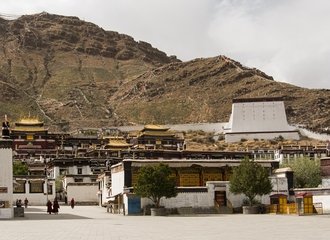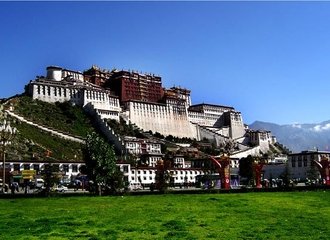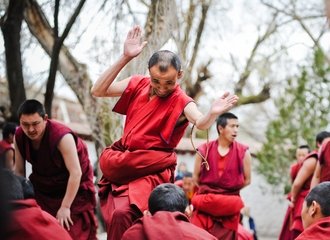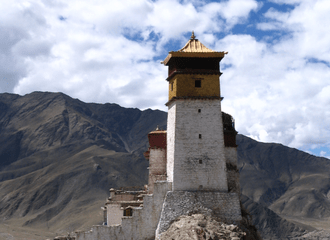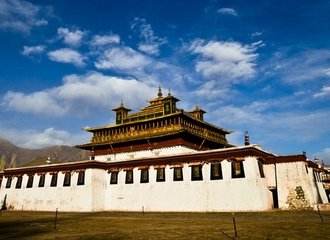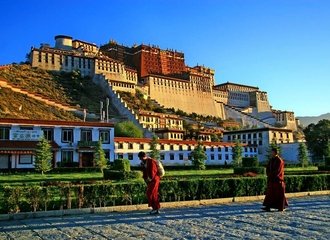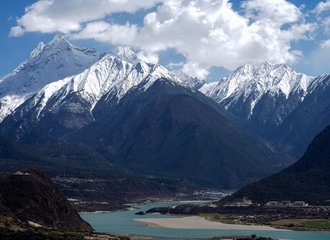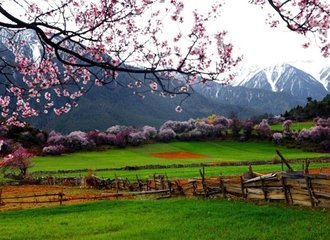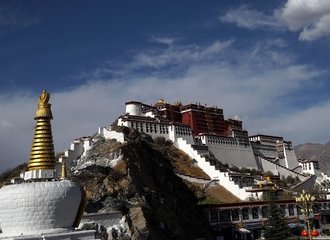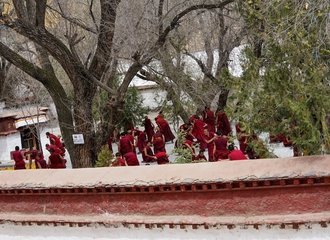Travel Guide to the Four Sacred Buddhist Mountains in China
The four sacred Buddhist mountains in China are Mount Emei in Sichuan Province, Mount Wutai in Shanxi Province, Mount Putuo in Zhejiang Province, and Mount Jiuhua in Anhui Province. They are the dojos of Samantabhadra, Manjushri, Avalokitesvara, and Ksitigarbha. For Buddism believers, a trip to include these 4 mountains are definitely the first choice when they plan to tour China.
Buddhism has a history of more than 2,000 years since it was introduced into China in the early Eastern Han Dynasty. With the introduction of Indian Buddhism, these four mountains began to build temples and monasteries in the Han Dynasty and have continued to this day. The promotion and inheritance of Buddhist culture in China over the past 2,000 years has made those four sacred Buddhist mountains become famous religions and tourist attractions at home and abroad.

Mount Emei
Located in the southwest of Sichuan Province, Mount Emei is the place of enlightenment of Samantabhadra. Religious culture, especially Buddhist culture, constitutes the main body of the history and culture of Mount Emei. All buildings, statues, rituals, etiquette, music, and paintings all show the rich flavor of religious culture. Due to the geographical location and climate, summer here is particularly cool. It is one of the most popular destinations for tourism, recuperation, and summer vacation in China.
In the middle of the first century AD, Buddhism was introduced into Mount Emei via India via the southern silk route. In the 3rd century AD, the doctrine of Samantabhadra faith spread in the mountains, and Samantabhadra Temple (now Wannian Temple) was established. In the middle of the 6th century, Sichuan became the center of Chinese Buddhism and Zen Buddhism. In history, there were more than 100 temples on Mount Emei. With a weight of 62 tons and a height of 7.85 meters, the giant copper Buddha of Samantabhadra is enshrined in this Wannian Temple and has become the finest Buddha of Mount Emei, with extremely high cultural and artistic value. In the long past, Mount Emei has not only accumulated rich Buddhist cultural treasures but also left a large number of precious cultural relics.
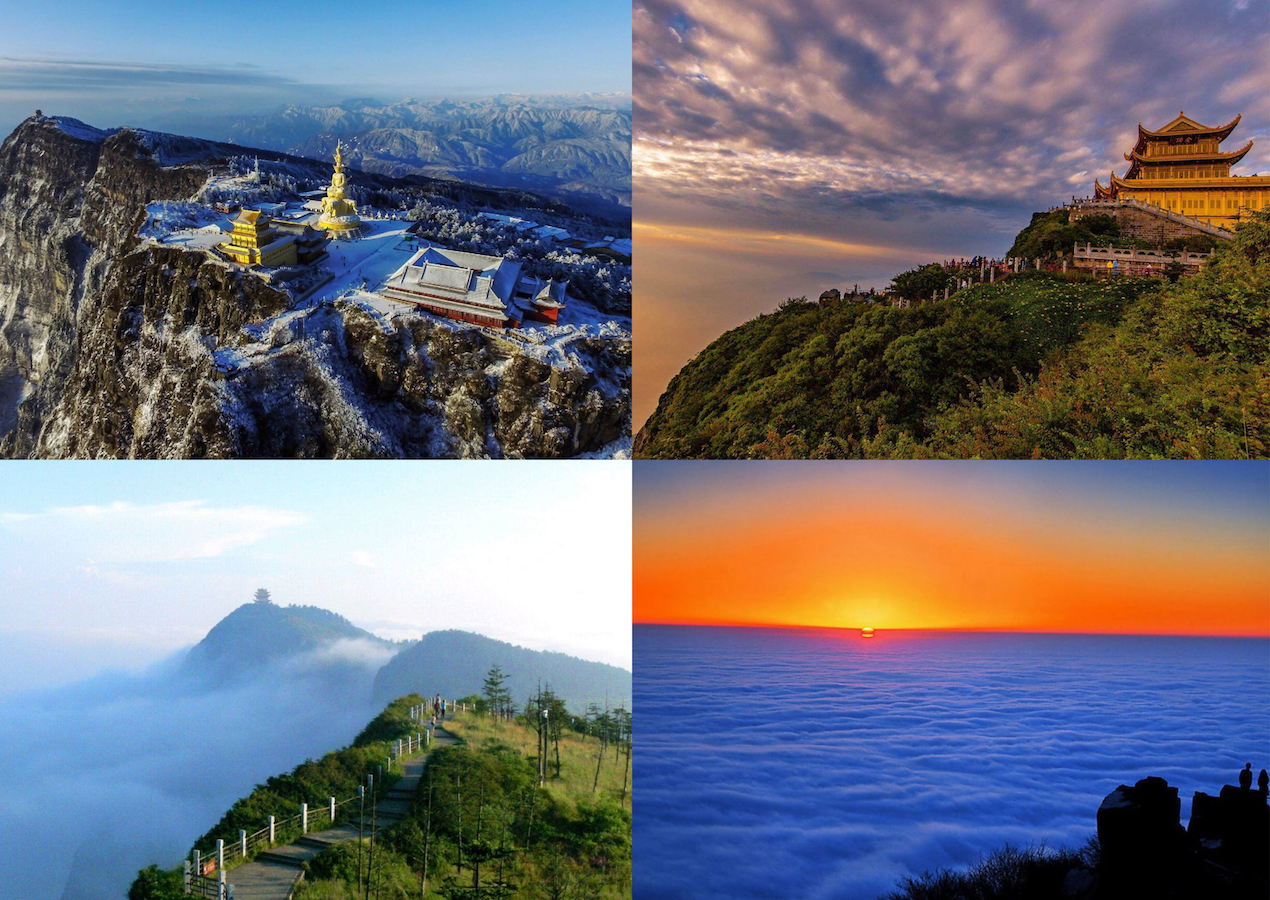
Top Highlights
Baoguo Temple: Located at the foot of Mount Emei, it's the gateway to the mountain and the starting point for visiting Emei Mountain. Built between 1573 and 1619, it is the largest temple and the center of Buddhist activities in Mount Emei. The Emeishan Cultural Relics Management Office is also located in the temple, which collects various ceramics, jade, literature, calligraphy and painting, metal utensils, and weapons and crafts unearthed in the Warring States Period.
Wannian Temple: Built-in 399 AD, was originally named Samantabhadra Temple and renamed Wannian Temple in 1601. However, it was almost completely destroyed in the fire in 1946. The current Temple was repaired in 1954 with government funds. Inside the temple, there is an exotic Buddhist building imitating the Gena Temple in India, which is unique among the many Chinese temple buildings in Mount Emei. Located in the half mountain, travelers can reach here by cable car or hike for about 40 minutes.
Fuhu Temple: Built in the Jin Dynasty (266-420 AD) and 1KM south of Baoguo Temple, the buildings in the temple have gone through the rise and fall of dynasties and have also risen and fallen several times. Now here is a quiet and clean nunnery, with fewer tourists here, and they also provide vegetarian food for 10 RMB/per person, meals are served in unlimited quantities and the taste is good.
Guangxiang Temple (Huazang Temple or Golden Summit Temple): Because the copper temple on the top of the peak shines in the sun, it is also known as the "Golden Summit Temple''. It was built in the Eastern Han Dynasty (25-220 AD) and rebuilt in 1886. The newly-built temple is built on the top of the mountain, with triple halls distributed from low to high on the central axis. Together with the giant Samantabhadra bronze statue (with a height of 48 meters, covering an area of 1,256 square meters, and weighing about 600 tons), it's the most popular place in Mt Emei.
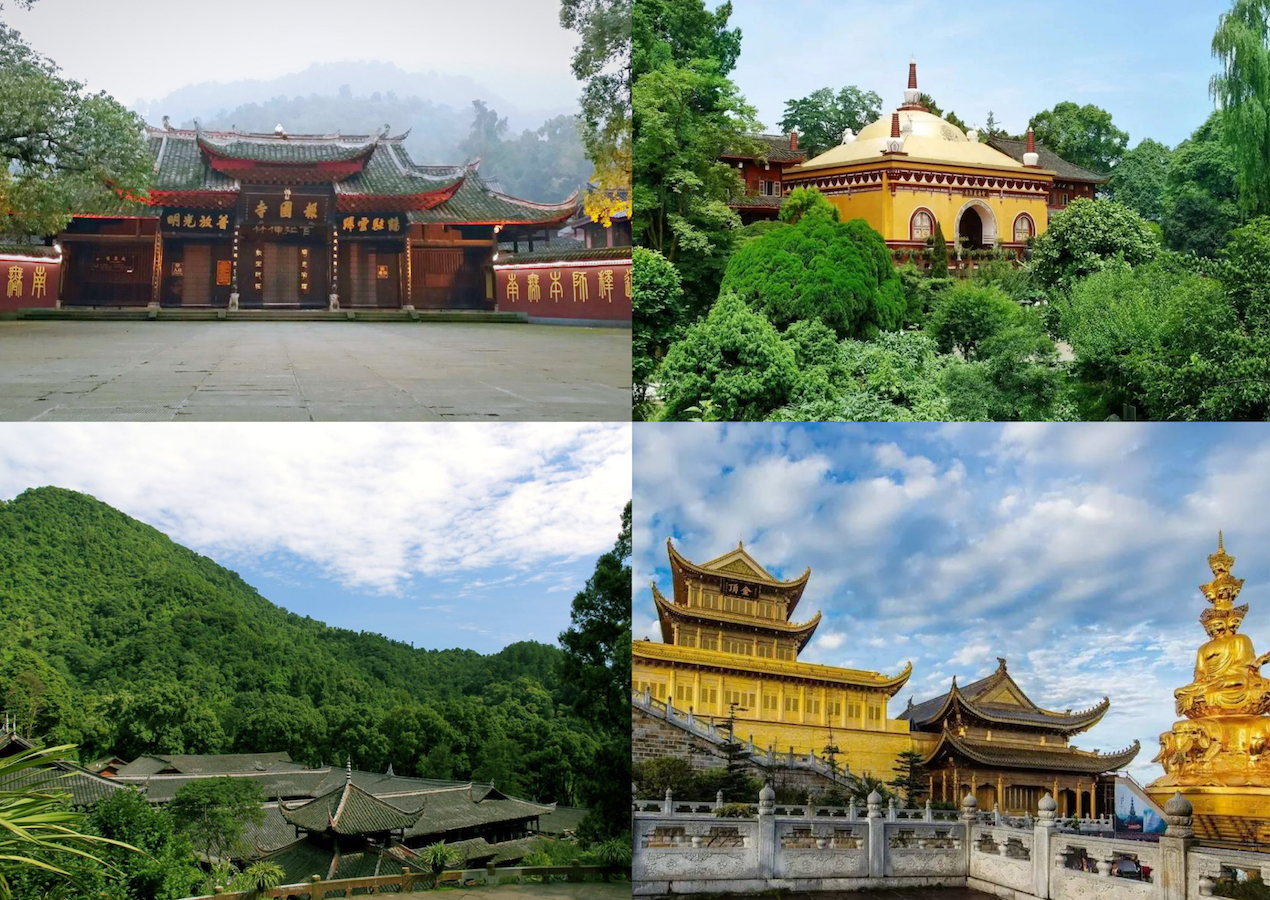
Qingyin Pavilion: Located at 710 meters above sea level on Mount Emei, it’s a must-pass for pilgrimage and sightseeing. It has only one hall and its area is much smaller than other temples and palaces. However, the location is condescending, with overwhelming momentum, surrounded by mountains and streams and beautiful scenery. It is a model of Chinese Buddhist temple garden architecture. Two small bridges and a pavilion outside give it a more quiet and tasteful look.
Yixiantian: Located in the Heilongjiang Gorge to the west of Qingyin Pavilion. Entering the canyon and looking up, there are steep cliffs on both sides. It looks like a huge mountain being split by a sharp ax, through the sparse vines and dense vines, the tips of branches and leaves reveal a line of blue sky. The narrowest part is only three meters wide and can only accommodate two people passing sideways.
Natural Ecological Monkey Area: Located near Yixiantian and is currently the largest natural wild monkey area in China. There are plank roads, pavilions, and cable bridges in the monkey area to facilitate visitors to watch and interact with monkeys. There are many monkeys along the mountain road, and they often form groups to beg for food, which is a feature of Mount Emei. However, many monkeys will snatch food from tourists, even rob their bags, so do not enter this area with food in your hand and watch out for your own bag.
Ninety-nine Turn: The most difficult section of the hiking trail of Mount Emei. It starts at Lingxiao Pavilion and ends at Shouxing Bridge. One turn after another turn, slope after slope, with no end in sight. The scenery here is actually very gorgeous, with various vegetation on both sides of the hiking road, known as the rare plant corridor of Mount Emei.
Wanfoding: The highest peak in Mount Emei and one of the best places to watch the sunrise on Mount Emei. Every spring, the mountains are covered with alpine azaleas, which are very beautiful. Here is also the best place to enjoy and photograph these alpine rhododendrons.
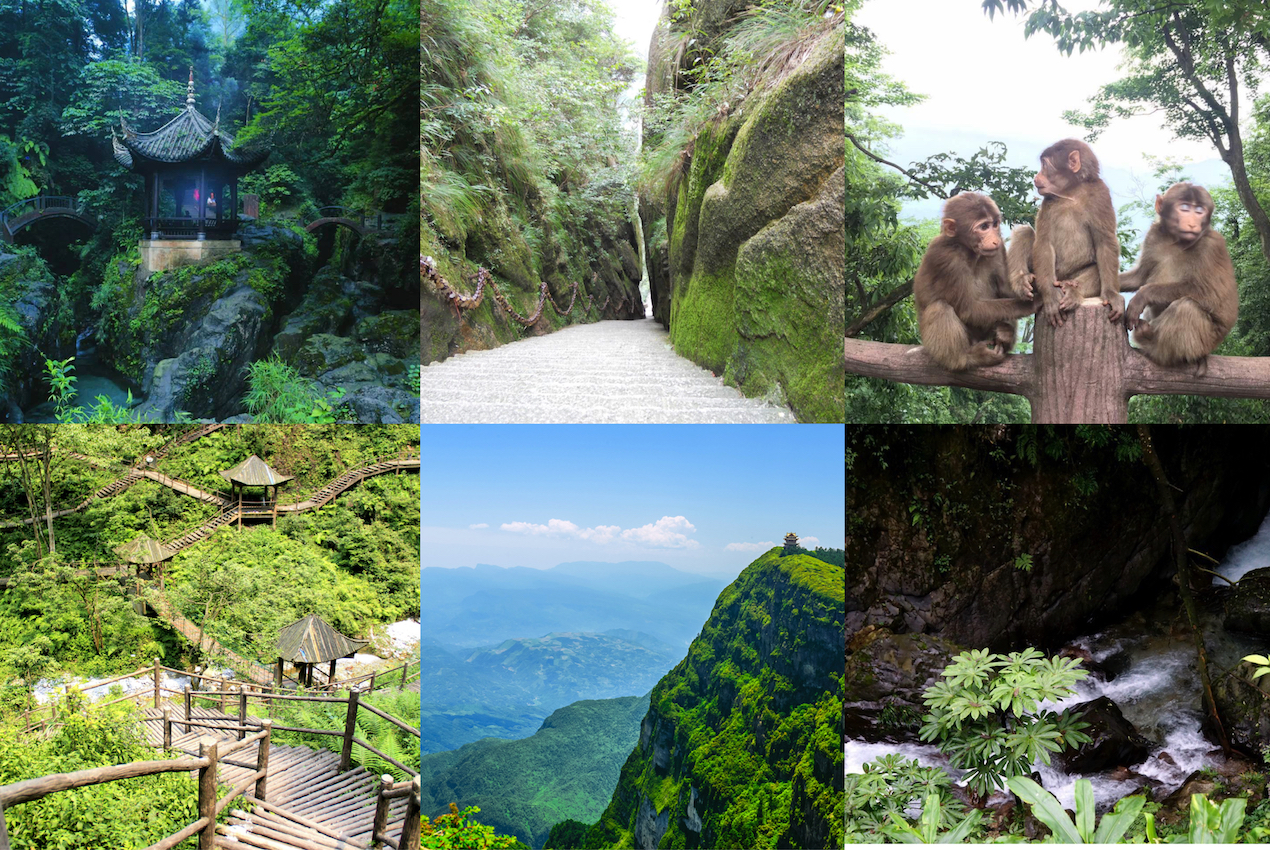
Best time to travel
Mount Emei is suitable for traveling all year round, and the best in spring and autumn. April is the time when the azaleas are in full bloom. Every year from June to August, many locals will go to Mount Emei to escape the summer heat, especially with their children to enjoy the summer vacation. Overlooking the valley in September and October, the frosty leaves are red, the clouds are lingering, and the mist is majestic. The snow scene starts from November to March.
Mount Emei's climate is restricted by radiation, atmospheric circulation, and geography, and the topography plays a very important role. The mountainous area has low cloud cover, foggy, and abundant rainfall. The annual average snowfall days are 83 days, the annual average foggy days are 322 days, the annual average sunshine foothills is 951.8 hours, and the summit is 1,398.1 hours.
How to get there and recommended travel days
The most popular gateway city to Mount Emei is Chengdu, which can be easily reached by flight or high-speed trains from every corner of China, and connects several popular overseas cities like Sydney, Amsterdam, Kuala Lumpur, Singapore, Seoul, etc. Then from Chengdu, travelers can easily hire a private car through a local China travel agency, or take a public bus, or ride a high-speed train (many trains from morning to evening) to reach Mount Emei. The driving takes about 2-2.5 hours and the train ride is only about 1 hour.
For Mt Emei, travelers usually spend 1-3 days to see its different areas, with a combination to the nearby Leshan Giant Buddha. To fully enjoy Emei's scenery, this 3-day in-depth tour is a perfect match. For hiking lovers, then you should not miss this 4-day hiking tour to walk up to the Golden Summit from Baoguo temple.
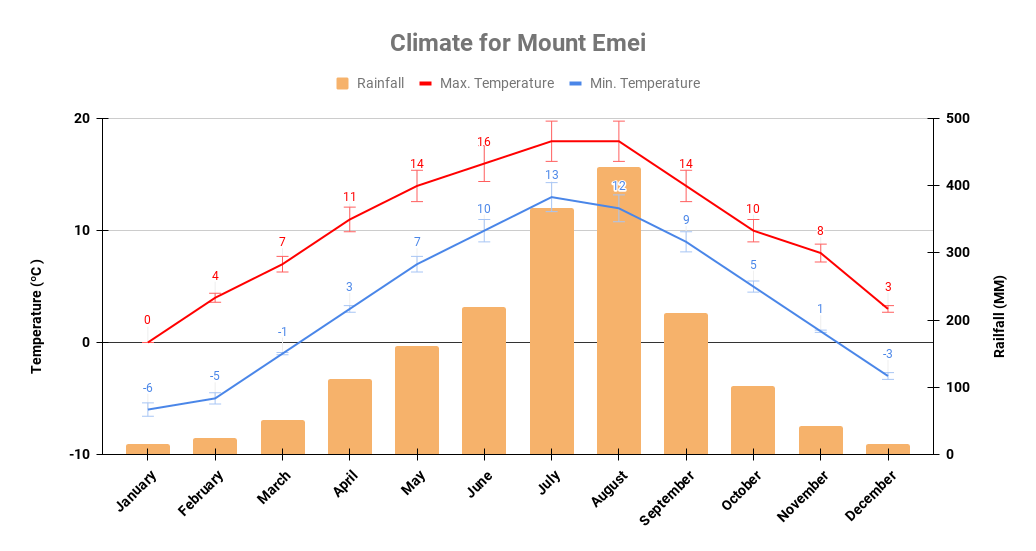

Mount Wutai
As the dojos of Manjusri Bodhisattva and located in the Xinzhou City of Shanxi Province, Mt Wutai is ranking the first of the four sacred Buddhist mountains in China because of its long history and grand scale. Together with the Lumbini Gardens in Nepal, Sarnath in India, Bodh Gaya, and Kushinagar, they’re known as the world's five largest Buddhist holy sites. Mt Wutai's average altitude is above 1,000 meters, and the highest point is 3,058 meters, which is called the "Roof of North China". It is named Wutai (Wu means five, Tai means platform) because the five peaks are like five primordial pillars, rising up from the ground, and on the top of the peaks are flat like a platform.
According to historical records, Buddhism was introduced to Mount Wutai in 67 AD. The monastery in Mount Wutai was built by Emperor Ming of the Han Dynasty. Due to the prosperity of "Manjusri Belief" in the Tang Dynasty, there were more than 360 monasteries here. Mount Wutai is the only Buddhist monastery in China where the Green Monastery (Chinese Buddhism) and the Yellow Monastery (Tibetan Buddhism) complement each other. Nowadays, there are still 86 places for religious activities.
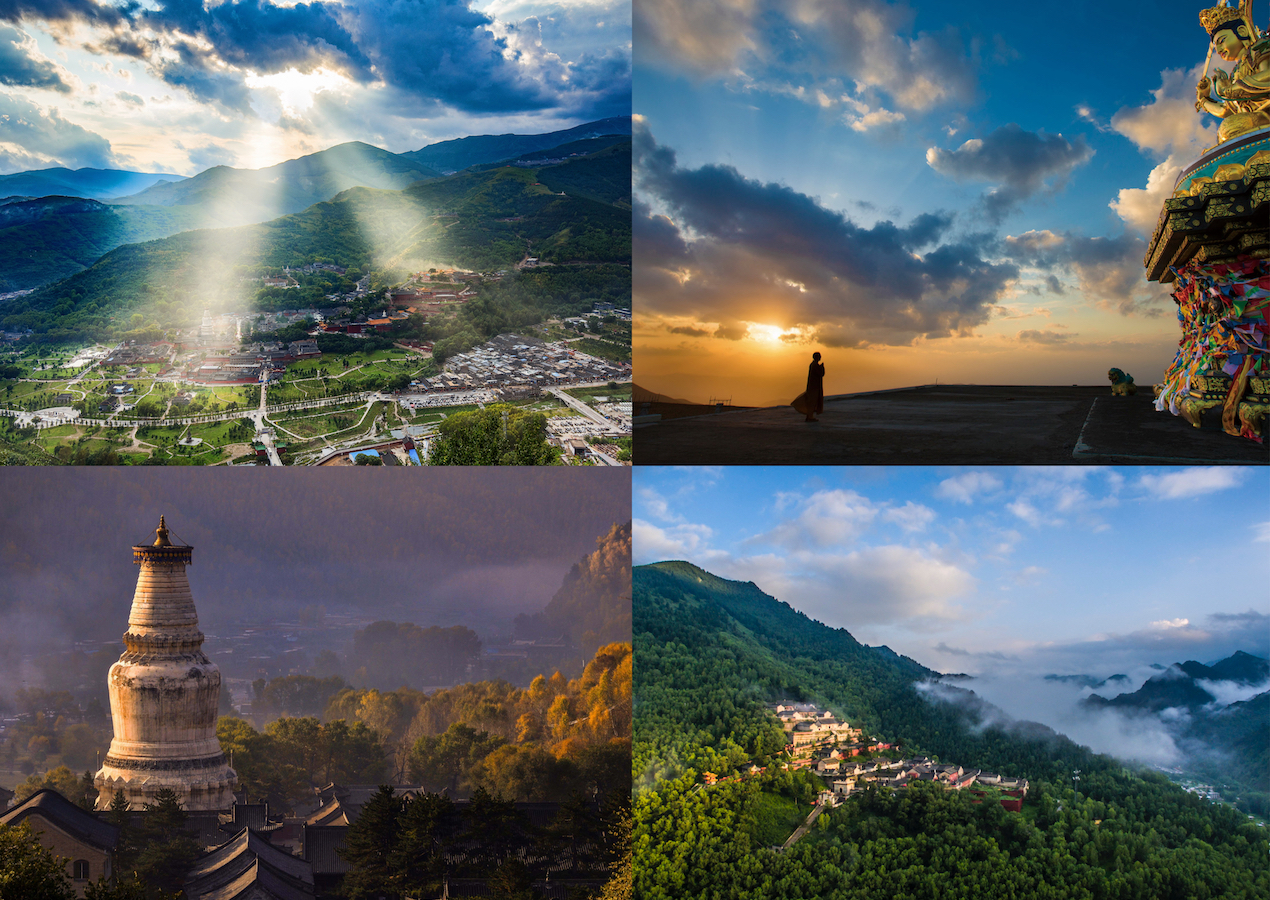
Top highlights
Wanghai Peak: The east terrace, with an elevation of 2,795 meters. Looking at Wanghai Peak from a distance, it looks like a standing elephant. Looking around from the top, it looks like a huge tortoiseshell. This is the best place to watch the sunrise of Mount Wutai. There will be a sea of clouds in the sunrise here, which is very spectacular.
Guayue Peak: The west terrace, with an elevation of 2,773 meters. Looking at the shape of Guayue Peak from a distance, it looks like a dancing peacock. This is the most popular place for tourists to hike. From here down to the mountainside, you often encounter the villagers picking mushrooms.
Jinxiu Peak: The south terrace, with an altitude of 2,485 meters. The other four peaks of Mount Wutai are all connected with a series of undulating mountains, and only the Jinxiu Peak is separate. Looking at it from a distance, it looks like a lying horse. It is not only the most famous high-quality crop production area in Wutai Mountain but also a holy place for hiking and self-driving tours.
Yedou Peak: The north terrace of the Mount Wutai Group, with an altitude of 3,061 meters. It is the highest peak in Mount Wutai and the highest peak in North China. Looking at the top of the mountain from a distance, it is in the shape of a saddle, and it was called the double-headed bird in Buddhism. Generally, snow falls in September and melts in April. The shadow of the Yedou Peak has ice that does not melt all year-round, which is called "ice of ten thousand years''.
Cuiyun Peak: The center terrace, with an altitude of 2,894 meters. Its land is shaped like a lion. There is a pile of boulders on the top of the mountain, moss on the stone surface, and a monastery here. The Wutai mountain weather station is also located at the top of Cuiyan Peak.
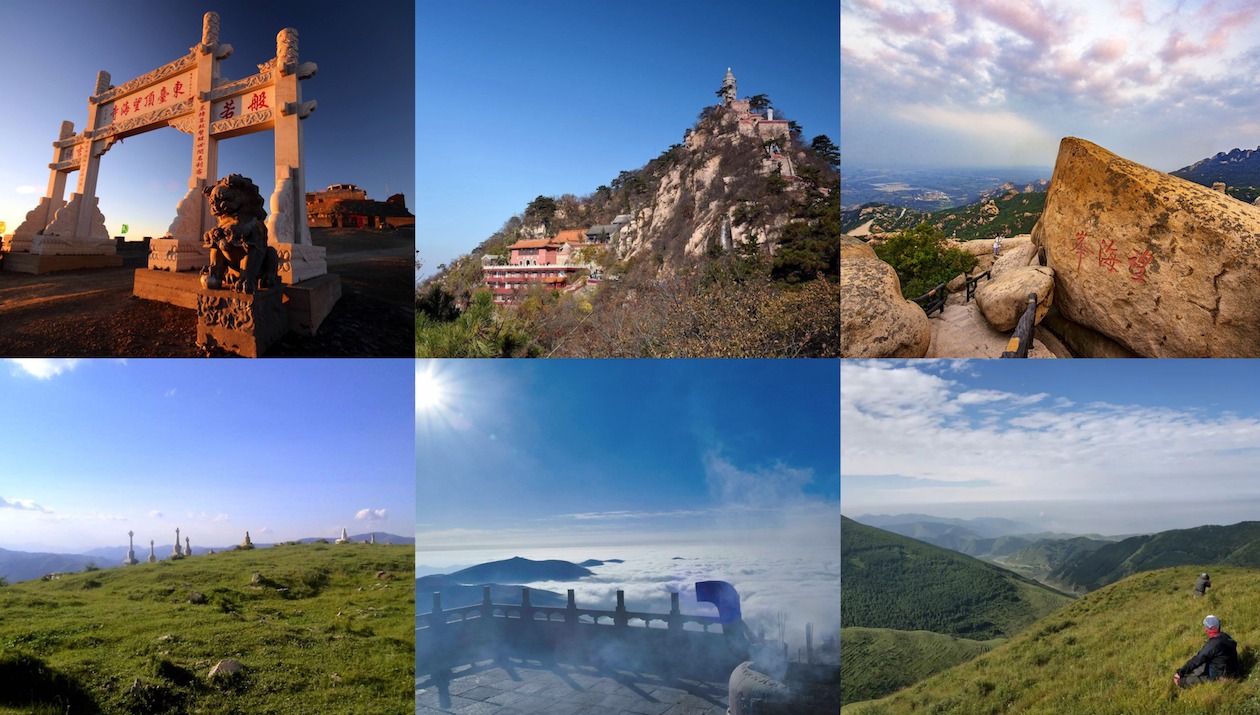
Xiantong Temple: A large scale and a long history temple located in the north of Taihuai town, Wutai Mountain. Built-in 69 AD, it was the first temple of the whole Wutai mountain and one of the earliest temples in China. The temple covers an area of about 80,000 square meters, with more than 400 buildings of various kinds, most of which were built during the Ming and Qing Dynasties.
Pagoda Temple: Located on the southside of the Xiantong Temple, it was originally the pagoda courtyard of Xiantong Temple. After the rebuilt stupa in the Ming Dynasty, it became an independent temple. There are a total of 252 wind bells in the whole tower, and the bells tinkled and rattled when the winds came through.
Bodhisattva Roof: The largest lama monastery in Mount Wutai, located in the north of Xiantong Temple. It is said to be the residence of Manjusri. The monastery was founded during 471-499 AD and rebuilt many times. It is also the residence of the emperors of the past dynasties when they worshiped in Mount Wutai, with typical royal features.
Nanchan Temple: Located in the southwest of Wutai County, with a history of more than 1,200 years. It is the earliest surviving wooden structure in China, and the main hall is the oldest surviving wooden structure in the Tang Dynasty in China. The Tang Dynasty sculptures in the temple are exquisite and can be called a treasure of Tang Dynasty sculpture art, which has important historical status and artistic value.
Foguang Temple: Located in Foguang Village, it was built in AD 857. It ranks third among the existing wooden structures in China. This temple has a long history and the Buddhist relics (including sculptures, murals, and inscriptions) in the temple are precious, so it is called "Asian Buddha Light".
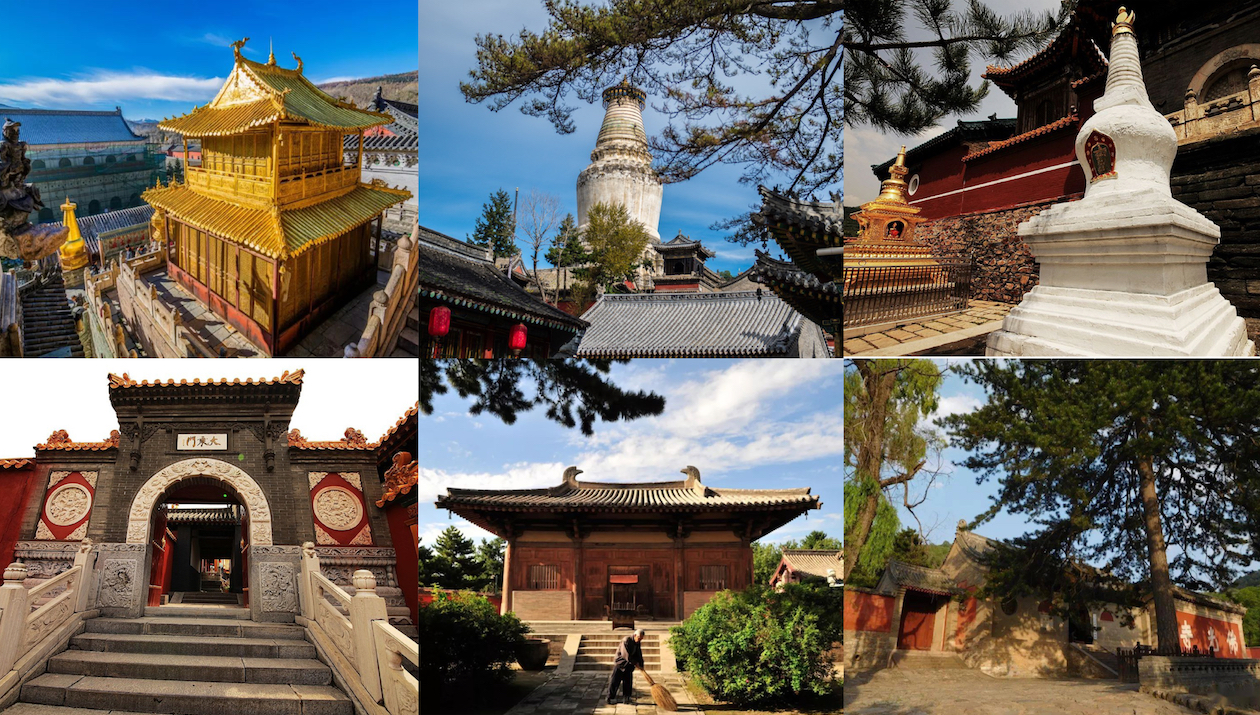
Best time to travel
The best time to travel to Mount Wutai is from May to September. Winter is also a good time to visit to enjoy the snow scenery if you don't mind the cold weather. From June to August, Mount Wutai is full of vitality, with thousands of trees competing for glory, lush pines and cypress, thick green grass, wildflowers blooming, and cattle, donkeys, and mules everywhere. From December to February, Mt Wutai is already covered in silver and snow, a quiet and white world.
How to get there and recommended travel days
For travelers to visit Mt Wutai, the best gateway is from the provincial capital Taiyuan, which only takes 3 hours by driving. There are plenty of flights and high-speed trains from the nearby famous cities like Beijing, Xi'an, Shanghai, Chengdu, Guangzhou, etc. The flight takes about 1.5-3 hours and the train ride is about 2-4 hours. Generally, travelers spend about 2-3 days visiting Mt Wutai and can be a good add-on tour between Beijing, Datong, Pingyao, and Xi'an.
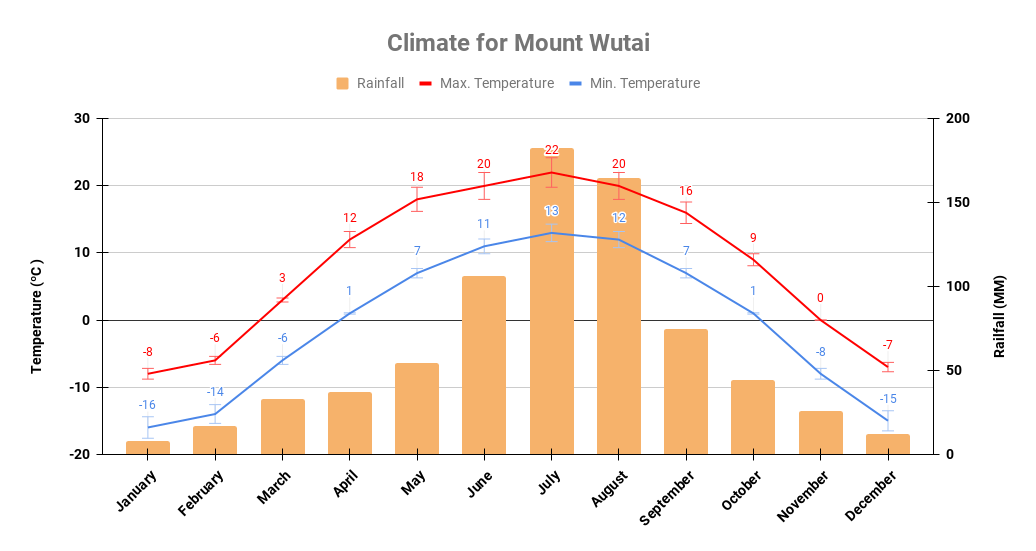

Mount Putuo
Mount Putuo is located in Putuo District, Zhejiang Province, in the eastern of Zhoushan Islands, which is said to be the dojo where Avalokitesvara Bodhisattva teaches sentient beings. Mount Putuo has a rhombus shape and is one of the 1,390 islands in the Zhoushan archipelago, shaped like a dragon lying in the sea, enjoys the reputation of the "Buddhist Kingdom of the Sea and Sky". It is 8.6 kilometers long from north to south, 3.5 kilometers wide from east to west, and 30 kilometers long along the coast. The central Mount Foding is the highest (291.2 meters), and the other main peaks are between 100 and 200 meters.
Mount Putuo was first established as the sacred place for Avalokitesvara in the Tang Dynasty (847-860 AD). According to legend, an Indian monk came here to witness the appearance of Avalokitesvara Bodhisattva. Every year in the lunar calendar on February 19th Avalokitesvara Birthday Day, June 19th Avalokitesvara Enlightenment Day, and September 19th Avalokitesvara Ordination Day, Buddhists from all over the world gather here, the whole mountain is lighted up all night, and the sound of Buddhist chanting is all night. That is very spectacular.
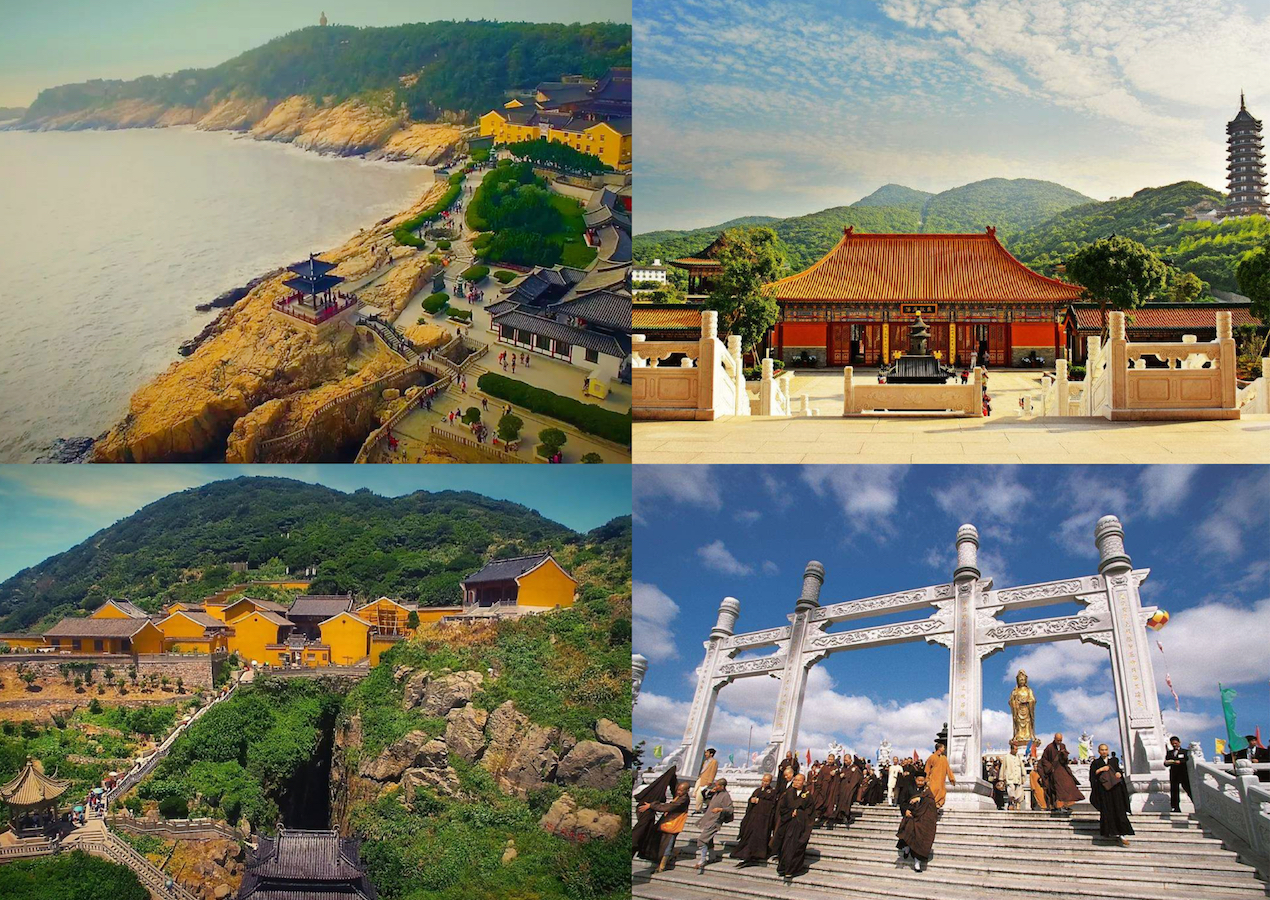
Top highlights
Puji Temple: Also known as Pujianchan Temple or Front Temple, was first built between 1078 and 1085. It is the largest temple on Mount Putuo, where all the abbots of the mountain lived here. It is the center of Buddhist activities on Mount Putuo, where all major Buddhist activities are held.
Fayu Temple: Also known as Fayuchan Temple or Back Temple, was founded in 1580. The most famous in the temple is the Avalokitesvara (Guanyin) Hall, also known as the Nine Dragon Hall. The nine dragon carvings are very delicate and vivid. Some glazed tiles here were demolished from the Ming Palace in Nanjing, which are known as one of the Three Treasures of Mount Putuo.
Huiji Temple: Commonly known as Fodingshan Temple or the Buddha on top of the mountain temple, was first built between 1368 and 1574 in the Ming Dynasty. Unlike other temples, the main hall enshrines the statue of Sakyamuni, while the others are Guanyin. The roof of the main hall is covered with glazed tiles of sky blue, light green, goose yellow, purple-red, etc., under the sunlight, it looks like tens of thousands of rainbows, forming a "Buddha shining" scene.
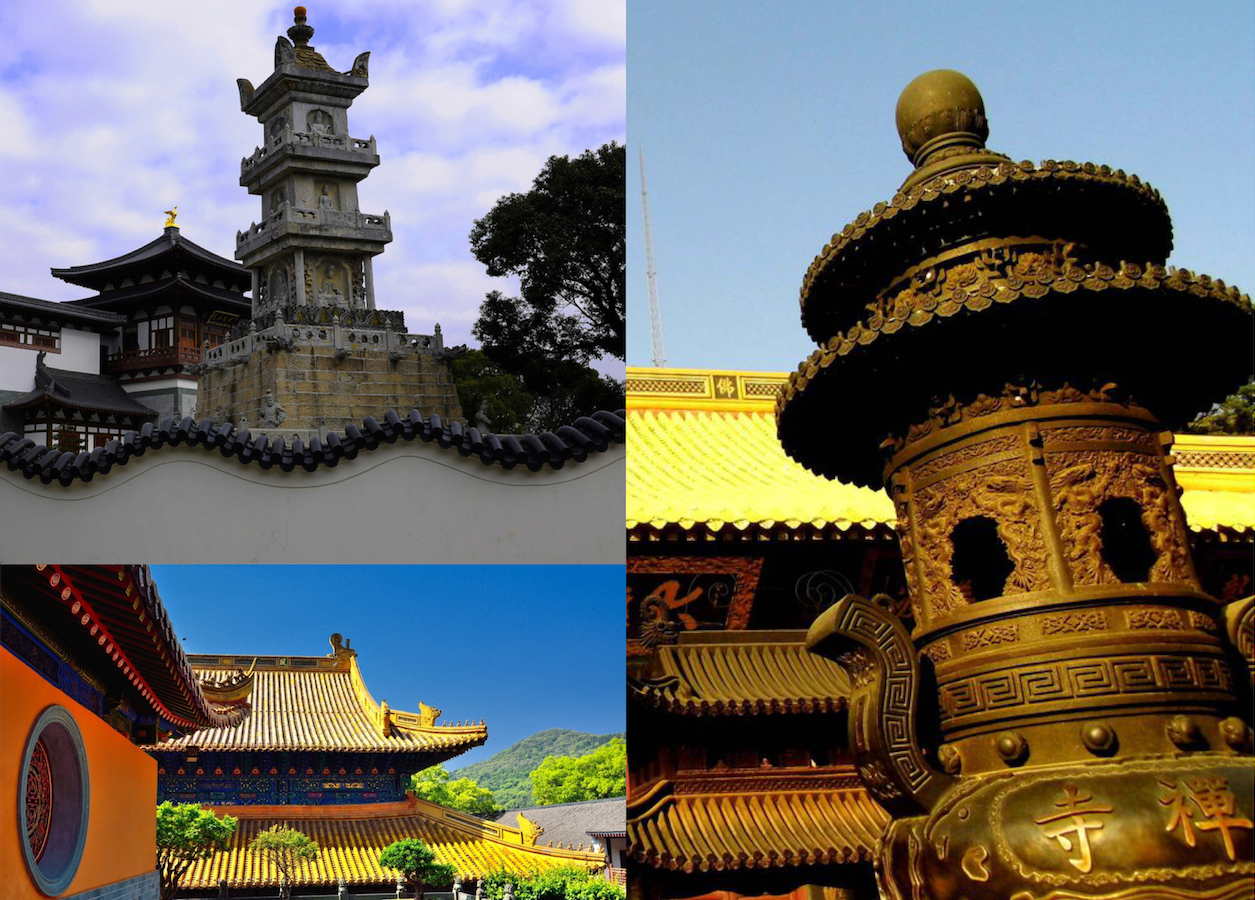
Nanhai Guanyin Statue: Located at the top of Longwangang in the southeast of the Putuo Mountain Scenic Area. This Guanyin statue has a total height of 33 meters, of which the base is 13 meters high, the bronze statue is 18 meters high, the lotus seat is 2 meters, and weighs more than 70 tons. This bronze statue of Guanyin has become one of the landmarks of Mount Putuo.
Purple Bamboo Forest: The rocks in the mountains are purplish red, the leaves of cypress trees here have a bamboo leaf-like pattern, so people called here purple bamboo stones. Later people planted many bamboos here, now it is named Purple bamboo forest. From here travelers can see the Guanyin statue in the south, and Luojia Island on the other side.
The Heavenly Southern Gate: Located in the southernmost part of Mount Putuo. It is named the Heavenly Southern Gate because of its towering rocks, two of which are like gates. A folk Chinese legend has it that this is the place where the eight immortals crossed the sea. Zen Master Zhenxie, the ancestor of the Putuo Zen Buddhism, once built a humble house here.
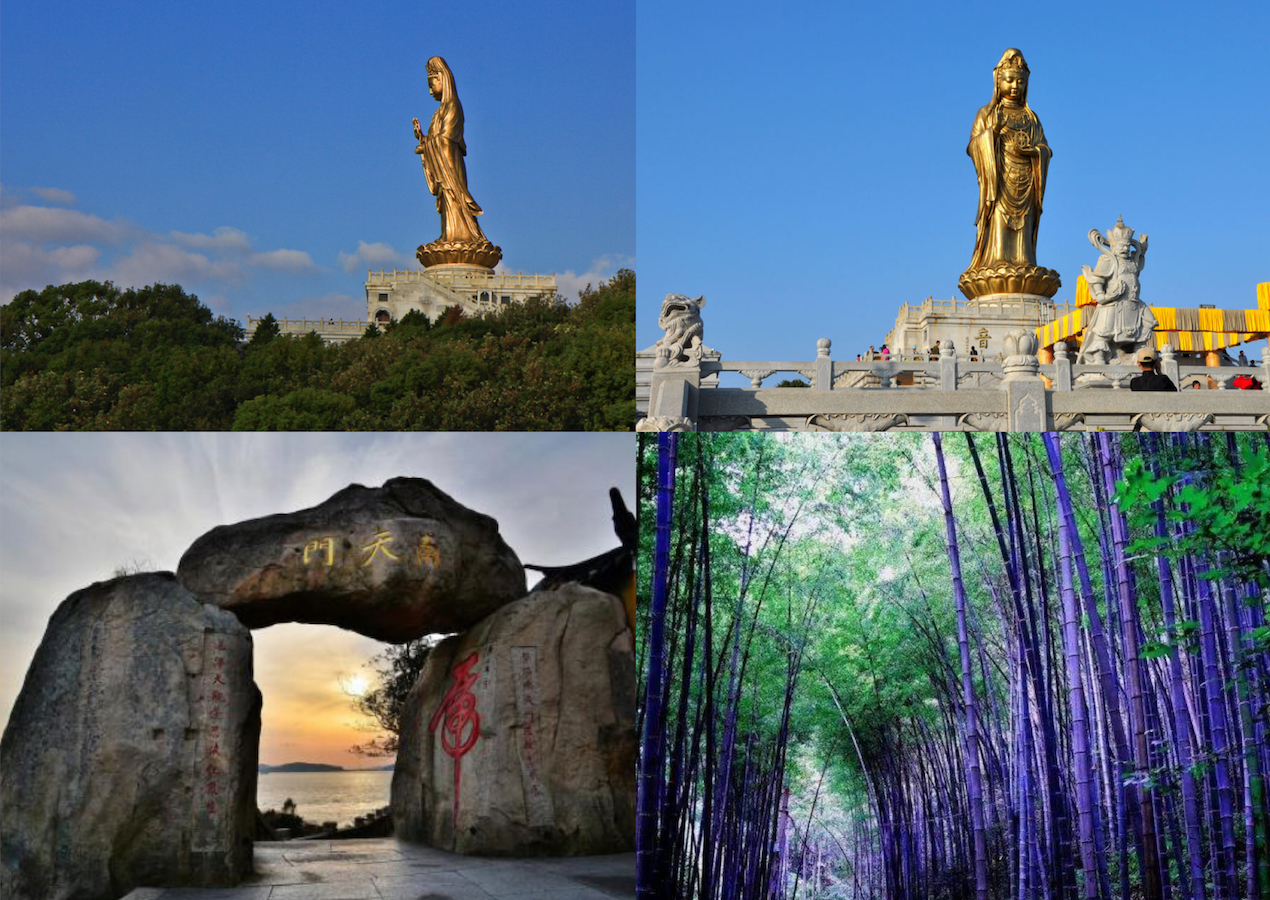
Best time to travel
From April to October are good times to visit Mount Putuo, while for pilgrims and Buddhism lovers, the best time must be the days of the Avalokiteshvara's birth, enlightenment, and ordination. Putuo Mountain has four distinct seasons, with no intense heat in summer and no severe cold in winter. It has a subtropical maritime climate. There is more rainfall in spring and summer, and sometimes there are typhoons in July, August, and September. Snow and ice are rarely seen in winter, which is relatively warm.
How to get there and recommended travel days
The best way to get to Mt Putuo is by flight, and there are daily direct flights from the provincial capital cities like Shanghai, Beijing, Xi'an, Guangzhou, Chengdu, etc. For travelers wishing to take the high-speed trains, the nearest gateway city is Hangzhou or Shanghai (where high-speed trains are connected to the most part of China), about 4-5 hours' drive. It's recommended to spend 1-2 days visiting Mount Putuo. For a 2-days excursion, it’s best to stay overnight near Puji Temple or Fayu Temple.
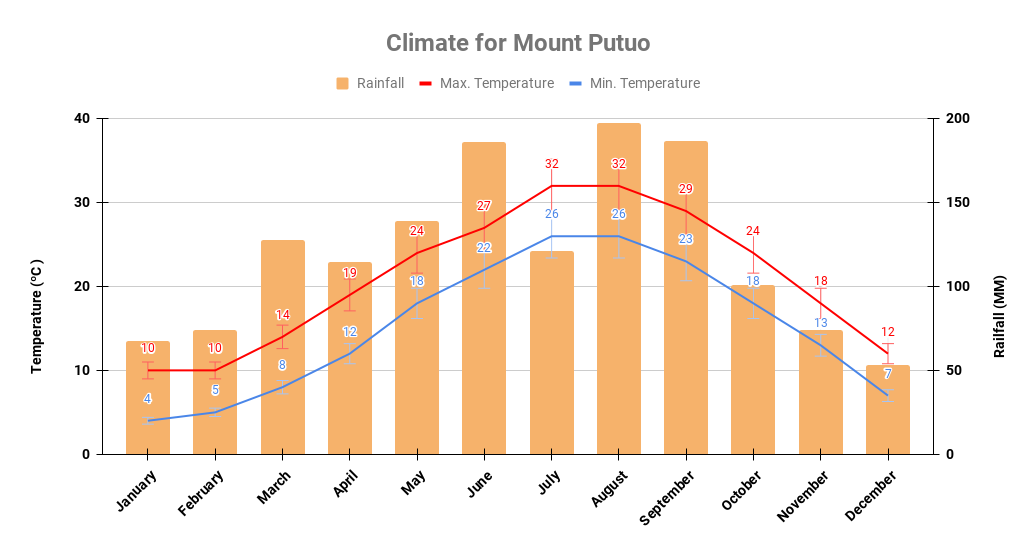

Mount Jiuhua
Located in Qingyang County, Chizhou City, Anhui Province, Mount Jiuhua is the place where Jizo (Ksitigarbha) Bodhisattva practiced and learned Buddhism. Mount Jiuhua has many temples (about 78), palaces, historic sites, and cultural relics including imperial edicts, Tibetan and other jade artifacts, and jade artifacts. Besides the rich cultural relics, it's also known as "The First Mountain in Southeast China" and rated as a World Geopark by UNESCO, with convenient transportation and complete infrastructure and tourism facilities.
Buddhism believes that Jizo Bodhisattva (born 1500 years after Shakyamuni’s Nirvana) is the symbol of "Great Filial Piety" and "Great Wish". When Jizo Bodhisattva saw the beauty of Mount Jiuhua, he decided to practice here. Buddhism here is the product of Buddhists' promotion of the secular, leading, and integrating Confucianism and Taoism. As a cultural nature, Mount Jiuhua has carried the folk belief in the spirit of Ksitigarbha for thousands of years, and this belief and its activities have multiplied the specific Jiuhua Mountain culture.
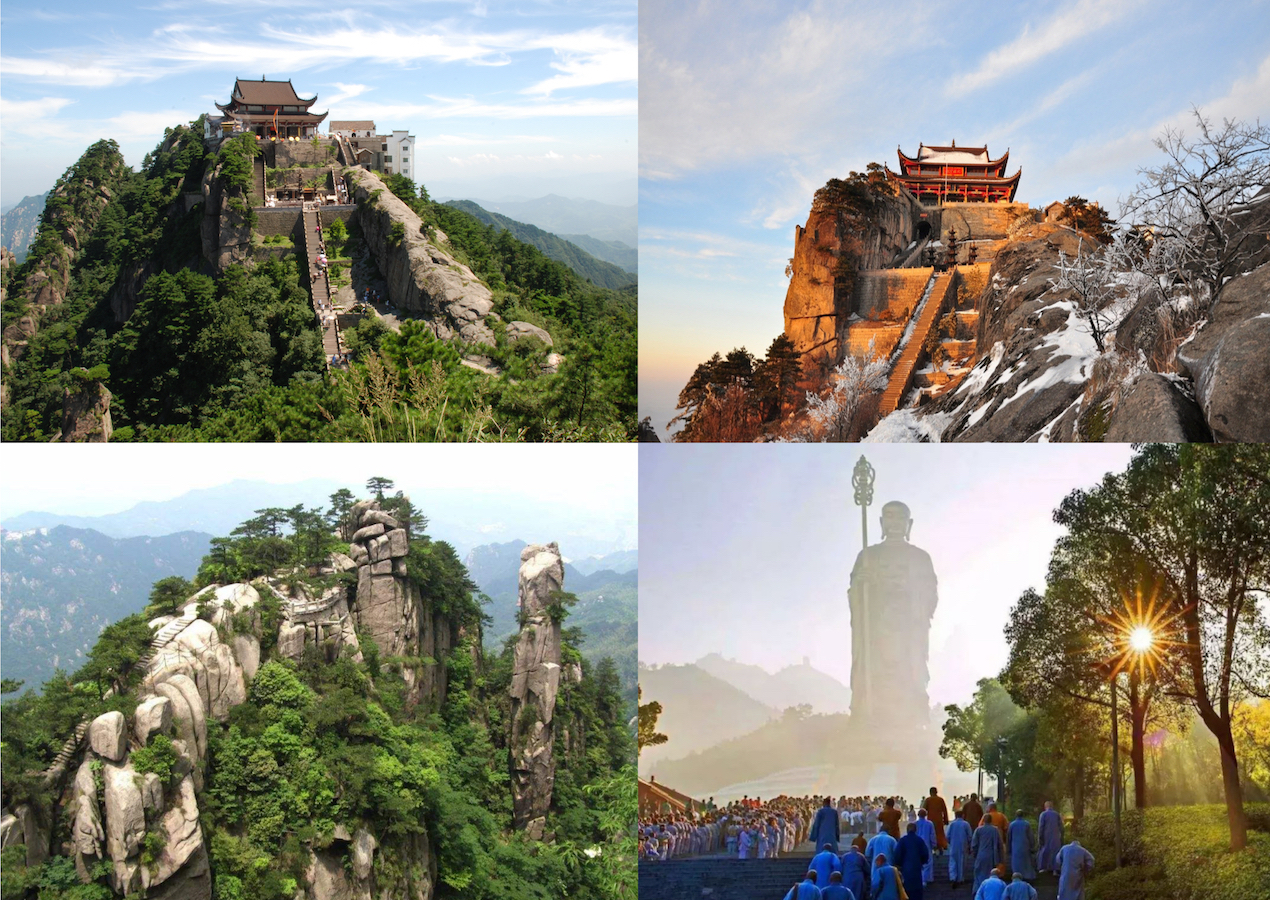
Top highlights
Tiantai Temple & Tiantai Peak: Located on the top of Tiantai Peak, with an altitude of 1,306 meters, Tiantai Temple is the highest temple in Jiuhua Mountain. It lies on the recessed ground between the Tiantai Peak and Yuping Peak and is a 3-story folk dwelling temple with a structure of stone and wood and a hard peak. Because this is the place where Buddhists must visit the holy site of Ksitigarbha, the Tiantai Peak is often called the main peak of Mount Jiuhua.
Shiwang Peak: The highest peak of Mount Jiuhua, with an altitude of 1344.4 meters. Standing on this vantage point, travelers can see the surrounding strange peaks, rugged rocks, springs and waterfalls, and gurgling streams. On the north side of the peak is the highest temple on Jiuhua Mountain-Tiantai Temple.
Huacheng Temple: With the longest history and is a place for the practice of Ksitigarbha Bodhisattva, it’s the first temple on Mount Jiuhua. In 401 AD, monks used to build a house here as a living and practicing place. After being rebuilt in 756-758 AD, it was named Huacheng Temple. In the Sutra building at the back of the temple, there is a "Huayan Blood Sutra" for over 28 years, written by a Ming Dynasty monk, Wuxia, using his own blood and gold powder.
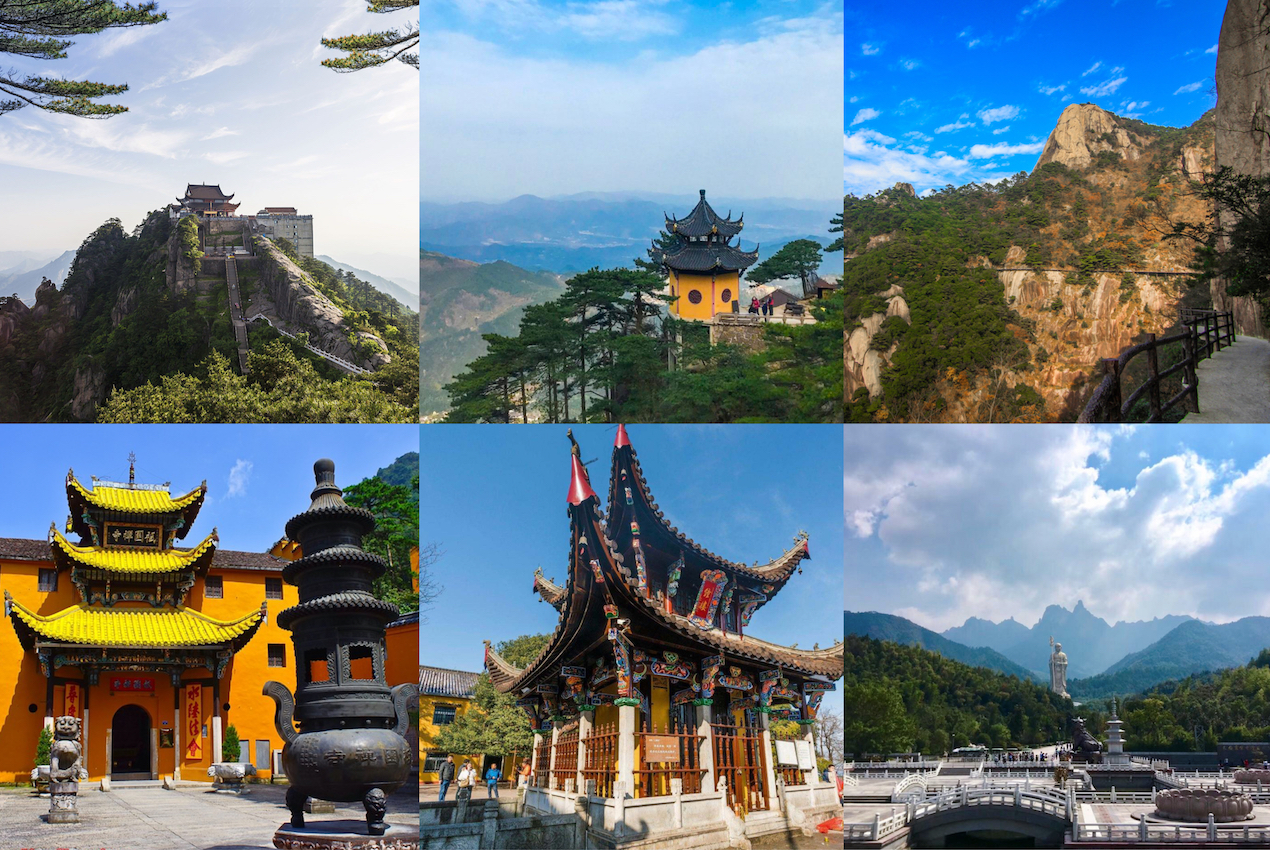
Zhiyuan Temple: First built in the middle of the 16th century and rebuilt and remodeled many times during the Qing Dynasty. At the beginning of the 20th century, it was rebuilt and expanded repeatedly, and its scale was the largest among all temples in Mount Jiuhua. The vegetarian restaurant here is very famous, which provides three meals a day with limited supply. There is a hotel called Shangketang, which is very cost-effective and is considered the best accommodation on the mountain.
Baisuigong Temple: Located on the 871-meter Chaxiao Peak of Jiuhua Mountain and built in the Ming Dynasty. [“Baisui'' means a hundred years old, “gong” means palace in Chinese.] The temple enshrines the body of a Ming Dynasty monk, Wuxia. Because he died at 126 years old, the temple was named "Hundred Years Palace''.
Huatai Scenic Area: Located in the north of Tiantai Peak. It is named for the rich mountain wildflowers and is one of the alpine scenic areas of Mount Jiuhua. For travelers who are bored with many temples and want to change the visual experience, Huatai is the best choice, with strange peaks and rocks and the sea of clouds is fascinating.
Jiuhua Grand Willing Culture Park: A place integrating natural landscape and Buddhist culture, as well as traditional art and modern science and technology, for ritual and Buddha worship, health care and meditation, leisure, and sightseeing. There are dynamic music performances in the square at 10:30 and 15:00 every day, expressing the praise and admiration of the Ksitigarbha.
Best time to travel
Mount Jiuhua is suitable for traveling all year round, and spring and autumn are the best time. In spring, the cloud cover is generally 90-400 meters, even reaching about 1000 meters, and the sea of clouds can be seen in many places on the mountain. In autumn, visitors can not only hear the pine waves formed by the valley wind but also witness the spectacular scenery of the bamboo sea. Mount Jiuhua belongs to the north subtropical temperate monsoon climate: obvious monsoon, distinct four seasons, mild climate, sufficient sunshine, abundant rainfall concentrated in summer.
How to get there and recommended travel days
To get to Mt Jiuhua, the best two ways are by flight or by high-speed train. Jiuhuashan Airport has opened direct flights to Hefei, Nanjing, Guangzhou, Shenzhen, and other cities, which only takes 40 minutes' drive. There are daily high-speed trains from Nanjing, Shanghai, Hangzhou, Wuhan, Hefei, and Huangshan to Mount Jiuhua, and the railway station is less than an hour's drive to Mt Jiuhua's entrance. To visit Mount Jiuhua, travelers would need to spend 2-3 days here. Located between Guilin, Huangshan, and Shanghai, Hangzhou, it can be easily added between those cities.
